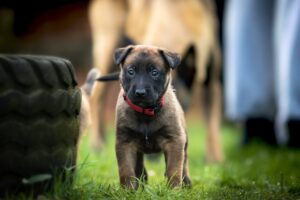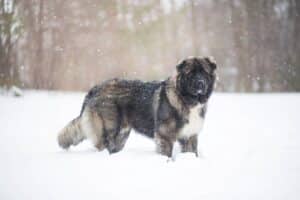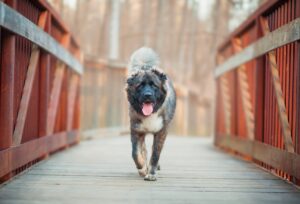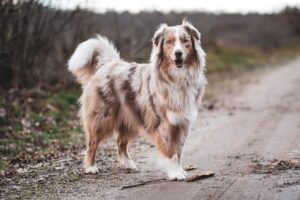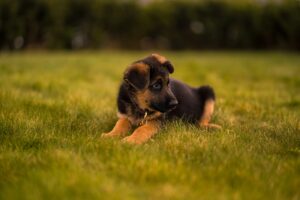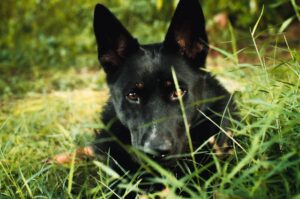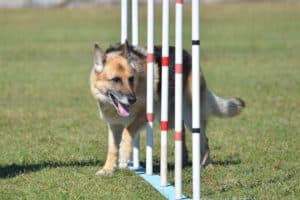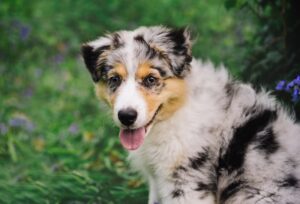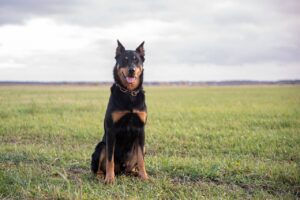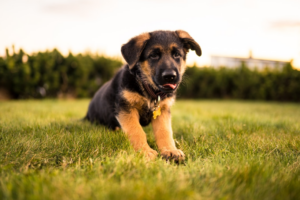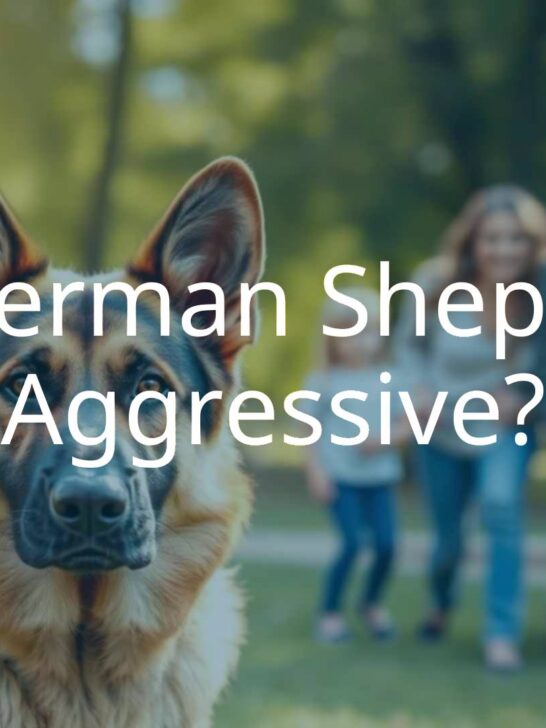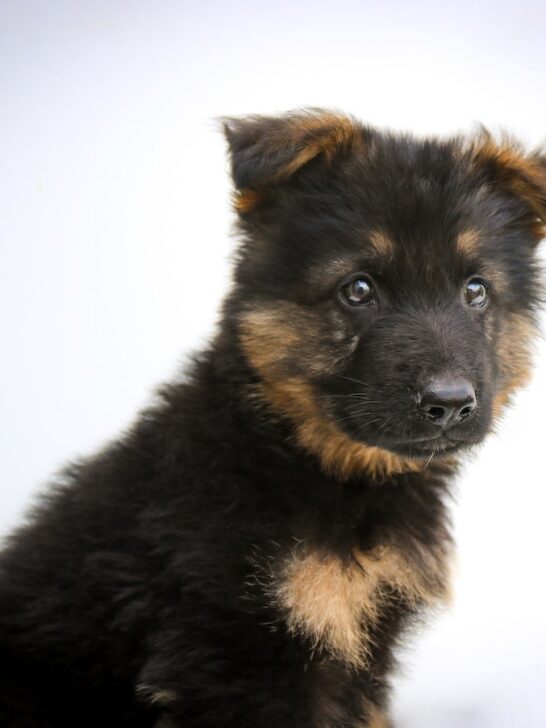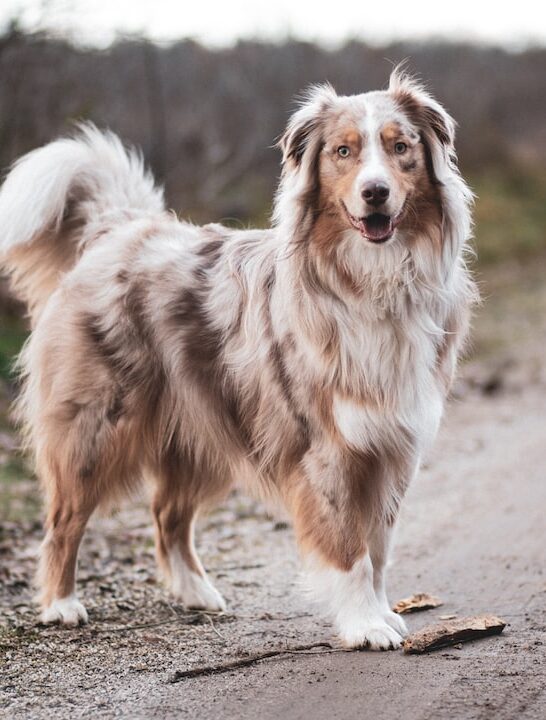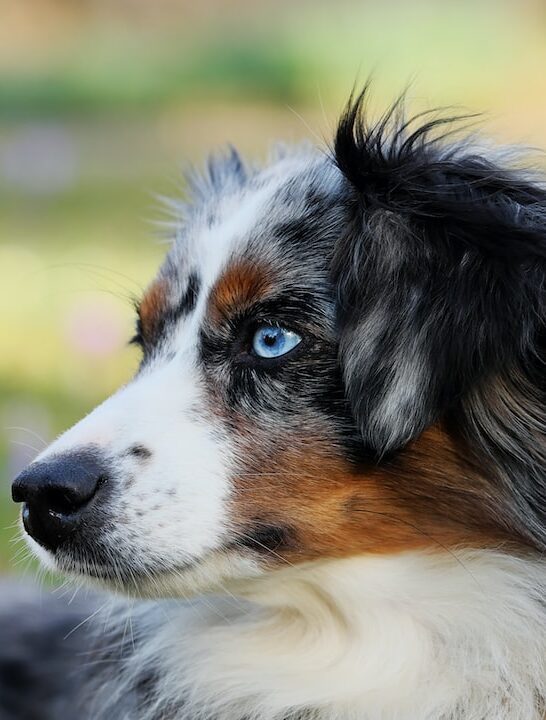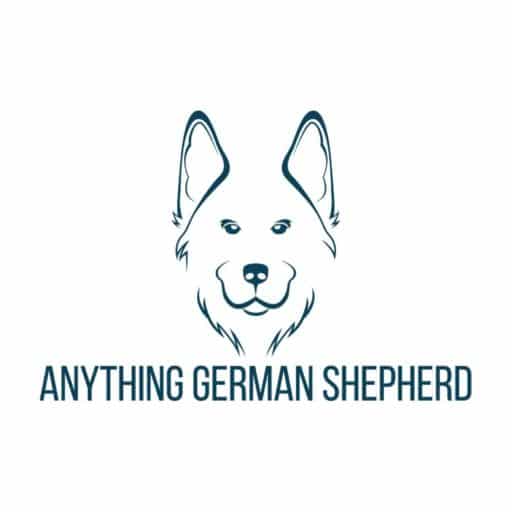9 Key Differences Between Wolves and German Shepherd Dogs
Pity the poor Alsatian or German Shepherd dog (GSD). Since these dogs were bred to resemble wolves, people not familiar with them often mistake them for wolves.
Just their appearance intimidates many people just because they are so wolf-like.
German Shepherds share many things with wolves, including pointed ears, a pointed muzzle, and the same number of chromosomes.
The differences are most important to remember. German Shepherds make wonderful companions, co-workers, and pets.
Wolves do not.
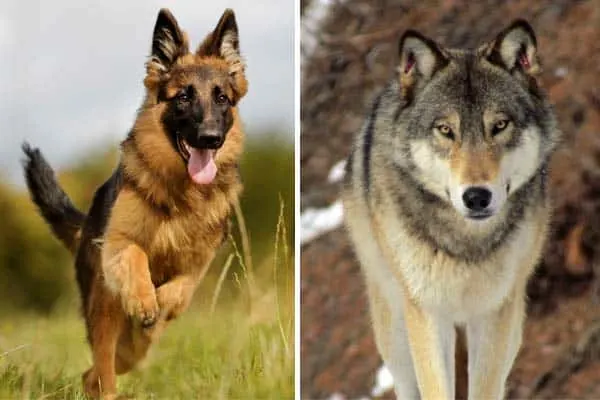
One: Size Of a Wolf Compared To A German Shepherd
Although considered big dogs, even the largest male German Shepherd is equal to the size and weight of the smallest wolf.
According to the Integrated Taxonomic Integration System, wolves come in three species, but on average, they range in height from 2.2 feet to 2.7 feet. GSDs range from 22 inches to 2.2 feet.
Wolves weigh anywhere from 51 pounds for a small female to 180 pounds for a big male.
Like dogs, male wolves grow taller, longer, and heavier than females. In contrast, German Shepherds only tip the scales at 49 to 88 pounds.
Related Content: Can a GSD beat a wolf?
Two: Differences in Paying Attention to People
GSDs find people fascinating. Their people-pleasing nature made them the dog in demand for jobs where humans and dogs need to work closely together.
GSDs make great search and rescue dogs, guide dogs, police dogs, and (surprise!) sheepdogs.
On the other hand (or paw), wolves just do not want to know anything about people except how to avoid them.
If you point your finger to an interesting object like a tennis ball, the GSD will follow your finger’s direction to the ball.
The wolf will either stare at you or ignore you.
Three: GDS Make Better Actors
Because German Shepherd dogs love pleasing people, they learn an intricate variety of tricks. They take cues from their owners or trainers readily.
This makes them constantly on the large and small screens – often playing wolves.
Because they are so incredibly hard to train and have very little interest in pleasing people, wolves make poor actors.
If they were human, they’d constantly be in their trailer.
Chances are, unless it’s a nature documentary, that wolf you saw in the movies was really a husky or a GSD.
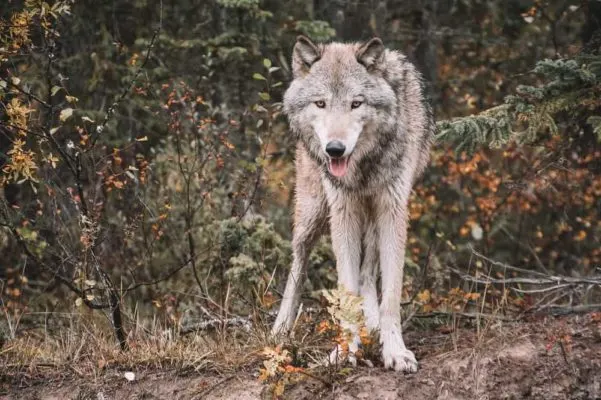

Stay Connected!
Get updates on the latest posts & more from Anything German Shepherd – straight to your inbox. SUBSCRIBE I consent to receiving emails and personalized ads.
Four: Differences in Hind Leg Shape
German Shepherds got their name, honestly, as being a sheepdog. In order to mimic a wolf creeping up on the flock, the hind legs permanently crouch.
According to AKC, This has been bred to extremes in America, as seen in the current breed standard on the American Kennel Club’s website.
Wolves do not need a permanent fake crouch because they stalk so well without any modifications from humans.
Their hind legs are much straighter and arguably much stronger than a modern GSD’s.
Five: GSDs Suffer Hip Dysplasia Far More Often Than Wolves
Partly because of the fashion for unusual hind legs and partly because of inbreeding, GSDs suffer from a painful genetic condition mostly unknown in wolves.
This is called hip dysplasia. It appears in GSDs of all ages, but especially in puppies and young dogs, like Riley in this YouTube video.
Do wolves get hip dysplasia?
Yes, but it is only seen in very old wolves as a consequence of arthritis, notes author and animal behaviorist Jeffrey Moussaieff Maison in his popular 1998 book Dog Never Lie About Love.

Six: Differences in Eye Color
Wolf’s eyes come in a wide variety of colors, including pale grey to a brown so deep it’s nearly black.
Other colors include yellow, amber, grey-blue, and blue-green. In contrast, all GSD eyes are shades of brown.
Other eye colors have appeared in GSDs, especially blue, but they are disqualified in the show ring, and so are rarely bred to pass that eye color gene along.
All dog and wolf puppies are born with blue eyes, but their real color comes in a couple of months.
Seven: Differences in Tolerating Extreme Temperatures
You can find wolves living outside in all kinds of weather, like blizzards near the Arctic Circle to the searing deserts of the Middle East.
They not only evolved bodies to thrive outside in extreme heat or cold, but they learn from older pack members how to cope in bad weather.
In sad contrast, the GSD needs what we could call “creature comforts.”
Any dog, including a seemingly tough German Shepherd, needs heat and shelter from the cold and plenty of shade in the heat.
They have no one to teach them about the weather except us.
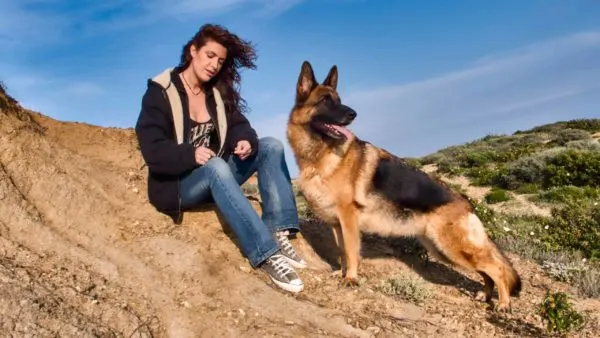
Eight: Differences in Population
The GSD is the second most popular dog breed, according to the American Kennel Club. This means there are millions of GSDs and part-GSDs just in America.
The future of our partner, this descendant of the wolf, is secure.
Not so for wolves. Many species teeter on the brink of extinction because they have been hunted ruthlessly by people.
According to Wikipedia, only about 300,000 wolves remain in the entire world.
Nine: Differences in Diet
Wolves eat meat all the time, right? Actually, they eat whatever they get a hold of.
Meat does seem to be what they like the best, though, and their digestive system tackles meat easily.
Dogs eat differently, and that may be why they were domesticated, while wolves live in the wild.
According to Science magazine, dogs have 122 gene differences in their digestive tract to wolves, making people’s food, like rice, easier to digest than meat.
Final Thoughts on German Shepherd vs Wolf
Although bred to look like wolves and once known as the Alsatian Wolf-dog, there are probably more differences than similarities between wolves and German Shepherds.
The domestication process made German Shepherds smaller, lighter, and friendlier; they looked out through dark brown eyes. They are far more popular with people than wolves.
Everyone loves a GSD but not a wolf. This has led to the noble but independent creature on the brink of extinction. It’s as if they would rather die than have to get used to living with us.
FAQ
What are the differences between a German Shepherd and a Wolf?
The German Shepherd and the Wolf may look similar at first glance, but there are many key differences between them. While the German Shepherd is a domesticated breed of dog, the Wolf is a wild carnivorous mammal. They differ in terms of their physical features, behavior, and overall characteristics.
How does the running speed of a German Shepherd compare to that of a Wolf?
Wolves are known for their incredible speed and agility. Wolf can run at speeds of up to 35 miles per hour, while the German Shepherd’s running speed is generally around 30 miles per hour. Although the German Shepherd is fast, it doesn’t match the speed of a Wolf.
What are some physical features that distinguish a German Shepherd from a Wolf?
German Shepherds have distinct physical features that differentiate them from the Wolf. German Shepherds typically have a more elongated body, a more curved tail, and a more pronounced sloping back. Their ears are also erect, whereas Wolf’s ears are generally straight and close to the head.
Can a German Shepherd and a Wolf mate and produce offspring?
Yes, a German Shepherd and a Wolf can mate and produce offspring. The resulting offspring are known as German Shepherd Wolf Mix or Wolfdogs. However, it’s important to note that these hybrids can possess a combination of traits from both parents and require specialized care due to their unique needs.
How does the bite force of a German Shepherd compare to that of a Wolf?
When it comes to bite force, Wolves have a significantly stronger bite force compared to German Shepherds. A Wolf’s bite force can exert up to 1,500 pounds of pressure per square inch, whereas the German Shepherd’s bite force is around 238 pounds per square inch.
Are German Shepherds commonly used as guard dogs?
Yes, German Shepherds are commonly used as guard dogs due to their loyalty, intelligence, and protective nature. Their natural instincts and strong abilities make them excellent guard dogs, as they are able to protect their owners and property with great dedication.
Can a Wolf be domesticated like a German Shepherd?
Although wolves are biologically related to domesticated dogs, they are not easily domesticated like German Shepherds. Wolves have retained their wild instincts and behaviors, making them unfit for domestication. They require specific conditions and expert handling to prevent any potentially dangerous situations.
How do German Shepherds and Wolves differ in terms of their lifespan?
German Shepherds typically have an average lifespan of 9 to 13 years, whereas Wolves generally live for 6 to 8 years in the wild. The lifespan of a German Shepherd is slightly longer due to their domesticated lifestyle and access to proper healthcare.
What is the difference in population between German Shepherds and Wolves?
There are approximately 10 million German Shepherd dogs worldwide, while the wild Wolf population is estimated to be around 200,000 to 300,000. German Shepherds are much more abundant due to their domestication and popularity as a breed.
Can a Wolf easily kill a German Shepherd in a fight?
Yes, in a fight between a Wolf and a German Shepherd, the Wolf would have the advantage. Wolves possess greater strength, agility, and predatory instincts, which would give them the upper hand in a physical confrontation with a German Shepherd.

